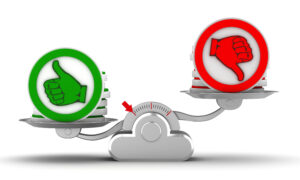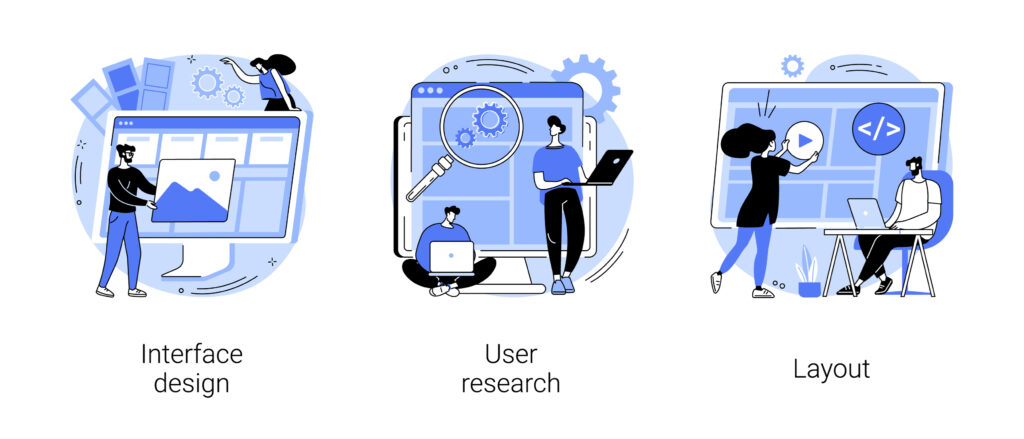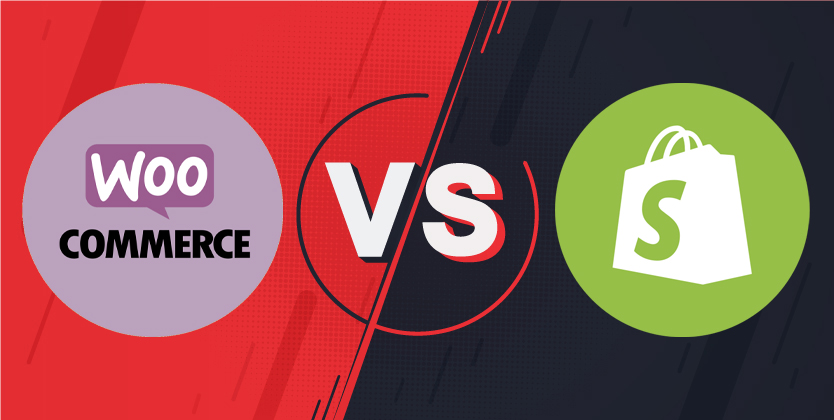Buying patterns are changing all over the world. More and more people are shopping online. This means that every one in four people around you will be buying goods and services online.
If you’re a business owner that doesn’t have a digital store yet, you might be losing out on a lot of potential customers.
Time to gear up and take action.
Faceoff – WooCommerce vs Shopify
You’ve decided to set up an online store. The first thing you do is to run a quick online search. You find out that there are plenty of ecommerce platforms to help you get started but the world’s most popular ones appear to be WooCommerce and Shopify. Both look great, have strong feature sets and are easy to use but which one is the perfect platform for your online store?
you get started but the world’s most popular ones appear to be WooCommerce and Shopify. Both look great, have strong feature sets and are easy to use but which one is the perfect platform for your online store?
Let’s dive into the details and find out.
Round 1 – Approach to Ecommerce
Shopify is an all-in-one complete solution for setting up and operating an online store. This subscription-based software service provides you with a user friendly ecommerce toolkit along with taking care of the technical aspects of managing a website such as web hosting, and security. According to reports 23% of the top 10k ecommerce stores worldwide use Shopify.
WooCommerce is a free to use plug-in that connects with your WordPress website and lets you convert it into a fully customizable online store. You can add on lots of exciting features according to your store requirements and use an independent hosting provider to get you started. WooCommerce is the choice of 21% of the world’s top 1 million ecommerce stores.
Now that we know what these platforms are, let’s look at the features, design options, payments methods, scalability, security and customer support provisions to see which platform is best suited to you and your business.
Round 2 – Ease of Set-up
Shopify is a ready-made solution that you can buy off the rack. All you have to do is go to the Shopify website and click on the sign-up button. A basic form will collect all your information, you choose a payment plan, make the purchase and congratulations, you have entered your brand-new ecommerce store. There are tools and accessories like hosting, security, optimization and maintenance provided but many times people will need to hire a Shopify expert to help setup the webstore and make the website look professional. It’s like renting an apartment in a really nice and secure building.
WooCommerce is a plug-in which has a few basic set-up requirements before you can get started. Initial set-up requires you to purchase a hosting service where you can build your website. Then you need to install the free WordPress CMS. This is slightly technical so you can either take help from online tutorials or employ the services of a WordPress expert. After completing this step, you can now install the WooCommerce plugin, run the set-up wizard and build your store using your own templates or a fully customized design. A little more work but you now own a house on your own piece of land.
Round 3 – Ease of Use
Shopify comes with the ability to set up and run the store using very simple and intuitive functionality. You can select your design template and populate it with a drag and drop interface. You can set up your inventory, manage sales, payments, shipping and customer services along with website performance optimization. The experience is highly guided which makes it also somewhat limiting. Although there are plenty of options to choose from, you can only experiment with whatever built in tools Shopify provides which restricts the control you have over your website.
WooCommerce requires you to have manual control over your store set-up and operations. You will be responsible for managing the store as well as taking care of website updates, backups and security. There are plenty of free and paid plugins that can help you automate many of these tasks but their initial setup is manual. This also means that when it comes to customizations, you have absolute control over your ecommerce platform. You can make the store as unique as you like but you will need to learn the technicalities or have an expert team like Spinning Web Media Solutions to help build your website.
Round 4 – Costs Incurred
Shopify has a very standard and simplified pricing model. You can start the basic package at $29/month and upgrade your subscription to an all-features inclusive package at $299/month which is almost $3588 per year. This is an ongoing rental fee for as long as you own the website. Besides this, Shopify offers a Shopify Payments solution which costs 2.9% + 30 cents per transaction or in case of third-party payment gateways a flat fee of 2.0% is charged for all transactions. Also, this does not include the cost of any plug-ins or third-party tools which will have to be bought separately. Many times people need the help of a Shopify expert to set up the website too making Shopify a costly solution in the long run.
WooCommerce is a free plug-in but there are a few set-up requirements that you have to pay for. You will have to pay for the WordPress hosting account, domain name and SSL certificate which typically adds up to almost $200 per year or under $17 per month. Add to this the cost of paid extensions but since there are so many options available, you can always find a cost-effective alternative. Also, WooCommerce does not charge you a percentage fee on your transactions so this might end up saving you more on the whole as compared to Shopify. You will have to hire an expert to assist you in setting up your WordPress website but in the long run this might end up being the more cost-efficient solution.
Round 5 – Design Options
Shopify comes with ready to use desktop and mobile responsive themes that look great with minimal customizations. There are free and premium templates available and then multiple variations of these available so you have some 100 options to choose from. Since the designs are produced by Shopify, these are the only options you can utilize. For people who are looking for a very personalized store appearance, Shopify offers limited options.
WooCommerce has been designed to be compatible with a large number of themes available in the market. Lots of developers sell their themes on ThemeForest and similar stores so when it comes to choose, there is plenty. Also, you have complete freedom to modify the theme as you wish and personalize it according to your business brand. You also have the freedom to get your website design fully customized without using templates with the help of technical experts.

Round 6 – Payment Methods
Shopify has its own payment solution called Shopify Payments which is powered by Stripe. It also integrates over a hundred third party payments gateways to accept credit cards from all over the world. However, Shopify Payments charges a flat credit card fee whereas the use of third-party gateways means that you will be charged by the gateway along with 2% per transaction fees charged by Shopify.
WooCommerce is very flexible and supports all popular payment gateways including PayPal, Stripe, Square etc. It also gives you access to a lot of less popular regional niche gateways and doesn’t charge you any transaction fee which helps save a lot of money if you are making huge transactions using third party gateways.
Round 7 – Integrations Options
Shopify not only lets you build a quick online store, it also gives you plenty of options to manage all aspects of business including SEO tools, Social Media integrations, email marketing, customer support helpdesk, website analytics and much more. All these add-ons are available on Shopify’s own store called Shopify Apps. However, drag and drop systems like Shopify do not allow for fully customized coding options.
WooCommerce also has a massive collection of plug-ins called WooCommerce extensions that allow you to add any features that you like including business performance analyzers, sales and marketing tools, customer service platforms and many more. You can get easily customizable add-ons for great prices. Also you have the option to custom code unique solutions for your website’s unique features, a perk which is quite useful in making your website stand out.

Round 8 – Scalability Flexibility
Shopify can handle the growth of your business to a certain limit. The pre-set plans they have in place let you upgrade your store to enterprise level performance and security without any downtime requirements. Although the enterprise level plan is costly, there are no technical difficulties that you will face. However, that as far as you can get. The solution will work in the beginning but there is a possibility that as your company operations and business grows, your website will not be able to support the incoming traffic load and you will be forced to compromise on your business plans or end up delivering a problematic user experience.
WooCommerce is more flexible because it does not give you three standard plans but the opportunity to grow your online store at the same pace as your business. Because you have more control over customizations, you don’t have to opt for all the features in a standard plan but can only pay for the add-ons or upgrades that you really need. Also, the option to create custom coded solutions gives you the ability to grow your online store as large as you want without any limitations. Technical professionals can help you with the upgrades and website expansion.
WooCommerce vs Shopify – Which is better?
When the time comes to make the big decision, you need to consider multiple aspects including the nature of your business, your skill set, your requirements, the associated costs and most importantly which solution will be more beneficial in the long run.
If you are looking for an easy-to-use solution but are not concerned about personalizing the branding and customizing the features too much, go for Shopify. The full plan is a little expensive though, costing almost $3500 per year with an additional 2% charge (minimum) on every transaction. Also, you may need the help of a Shopify expert like which will be another cost to consider. For the short term the solution will work but if your goal is to having a growing business in the future, you will find that Shopify will unfortunately limit your growth and you will either need to change your goals or business plan or start from scratch and rebuild the website on another platform.
For a long-term solution that is created for your brand, has unique shopping features and is an experience in itself in terms of design and functionality, WooCommerce is the solution for you. You can fully customize the webstore as there is plenty of flexibility in design and functionality. WooCommerce also gives you the ability and power to grow and scale your webstore as your business grows. All this is possible in a cost-effective way if you plan for the long run. No matter which you choose, hire an expert team like Spinning Web Media to help weigh the options that are best you’re your business goals and you will make an investment that is scalable and completely in your control for years to come.

